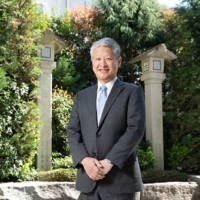For many people, the term "ceramic art" conjures up the image of functional ware on a dinner table: cups and bowls filled with food and drink, or perhaps ornate European platters or wabi-sabi Japanese teapots. To others, it may mean terra-cotta figurines or simply sculpture that uses clay as its primary material. But for veteran clay-artist Kosho Ito, "ceramic art" is both a calling to which he has dedicated his entire life and a restrictive label that he refuses to embrace.
"Once people create a system, it's impossible to destroy," said Ito, sitting in front of his sprawling white installation "Eros of Alumina," now on display at the Museum of Contemporary Art Tokyo as part of his retrospective, "Kosho Ito Works 1974-2009, Order and Chaos." "When the system is being created, becoming a part of it is easy, but once you are in, it's hard to get out."
The system Ito is describing is that of classification within the arts world, in particular the rigid confines of ceramic art, which in Japan shoulders a long history and a largely conservative community hard-wired to maintain the status quo. Even the contemporary ceramics movement in Japan, though it began as a revolutionary force designed to challenge the borders of traditional craft, has now constructed its own set of rules and criteria for classification.
















With your current subscription plan you can comment on stories. However, before writing your first comment, please create a display name in the Profile section of your subscriber account page.